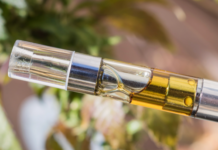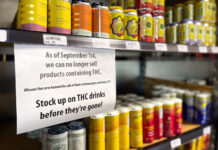Today, the Drug Policy Alliance (DPA) launched Safety First, the first of its kind drug education curriculum aimed at providing high school students with honest and scientifically accurate information that empowers them to reduce drug-related harms.
The curriculum was first piloted and evaluated at Bard Early College High School in Manhattan in Spring 2018, and then was expanded to five schools within the San Francisco Unified School District during the 2018-2019 school year. Based on feedback from students, educators and parents following the pilots, the curriculum was revised to increase its resonance, value and efficacy.
Unlike abstinence-only programs, Safety First is based on the philosophy of harm reduction. While the primary goal is still the same—to discourage young people from using alcohol and other drugs—Safety First takes it one step further and provides teens with essential information to keep themselves and their friends safe if and when they do encounter these substances.
The curriculum comes at an extremely vital time when the U.S. is experiencing its worst public health crisis in decades, with nearly 70,000 American lives being lost to accidental overdose in 2018 alone. Drug overdose is now the leading cause of death among Americans under 50.
“First and foremost, we want to keep our young people safe,” said Sasha Simon, Safety First Program Manager. “The old paradigm that not teaching someone about something will keep them from doing it is inherently flawed. And lives are being lost because of it. This curriculum provides students with the education and skills they need to understand drugs and their associated risks, so that they are then able to make informed, responsible—and most importantly, safer—choices.”
“‘Just say no’ doesn’t work—it shames people,” said Drew Miller, health teacher at Bard Early College High School. “Knowing what something is gives them the opportunity to make an informed and safe choice. If anything, this curriculum has made my students less likely to use drugs because they know the honest truth about how they work. And should they or their friends encounter these substances, I feel better knowing I did everything I could to equip them with the basic understanding to keep them safe.”
The curriculum—consisting of 15 lessons that can be completed in 45-minute class periods—aligns with the National Health Education Standards (NHES) and Common Core Learning Standards, and is intended to be implemented in high school classrooms by health teachers, counselors and other youth workers. The lessons are designed to engage students through interactive activities such as discussions, research and role-playing. For ease of use, they also include teacher modifications, student worksheets, extension assignments for further learning and a grading rubric to assess students’ understanding.
The goal of the curriculum is to empower ninth and tenth grade students to make healthier decisions by helping them develop:
- Critical thinking skills to access and evaluate information about alcohol and other drugs
- Decision-making and goal-setting skills that aid them in making healthy choices
- Personal and social strategies to manage the risks, benefits and harms related to use of alcohol and other drugs
- An understanding of the impact drug policies have on personal and community health
- The capability to advocate for health-oriented drug policies
Lessons offered include:
- What is a Drug?
- Introduction to Harm Reduction
- How Drugs Work
- Drug Classes: Stimulants
- Drug Classes: Cannabis – Part 1
- Drug Classes: Cannabis – Part 2
- Vaping & E-Cigarettes
- Drug Classes: Alcohol & Other Depressants
- Drug Classes: Prescription & Other Opioids
- Drug Classes: Psychedelics
- Mental Health and Coping
- Health & Policy
- Understanding Zero Tolerance
- Looking Back, Looking Forward
- A Healthy Future
DPA has a long history of providing guidance to parents on how to talk with their kids about drugs. The core of this advice can be found in the Safety First: A Reality-Based Approach to Teens and Drugs booklet. It is available in eight languages and has been widely distributed.
Parents can find further advice with these short tip sheets:
The Safety First curriculum is available for download at no cost at drugpolicy.org/safetyfirst.











